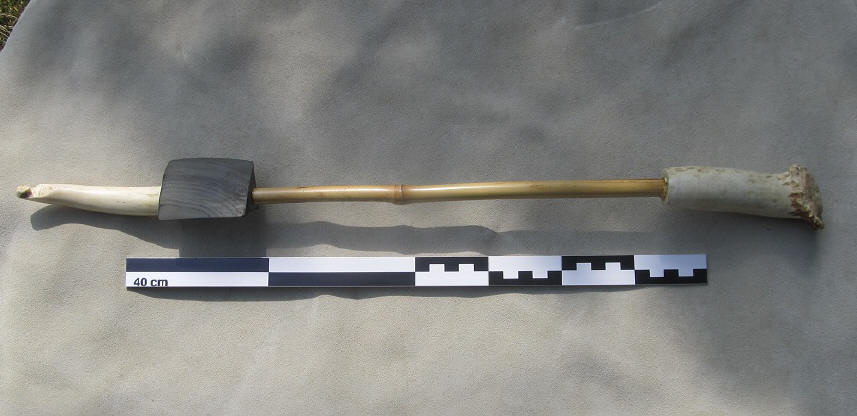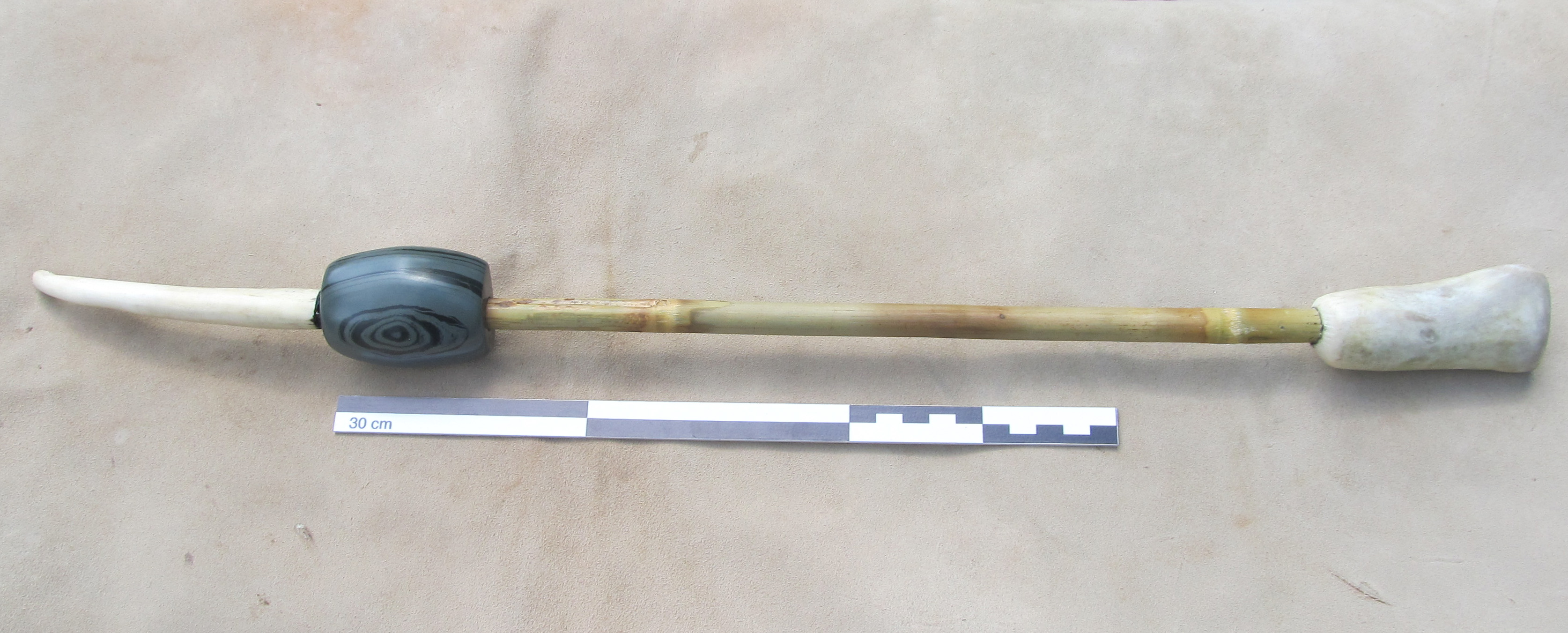

(Up-dated 25/June/2016)
Here are some of the Bannerstones Larry has made over the years.
(
Photo LK) This atlatl with geniculate
bannerstone was made by Larry. It has an antler hook, and handle. The main
shaft is hickory and the banner is banded slate. It was fashioned after a
bannerstone from the Bullseye Site in Greene Co. Illinois.
See Atlastatlatl
The bannerstone was drilled using Southern Illinois cane and flint dust. The flint dust acts as an abrasive and the cane holds the dust in place to cut the stone. The dust is winnowed on a tarp with a slight breeze blowing then it's selected by pinching the tarp above and below the correct particle size, then pouring the dust into a container. Larry believes that the heat generated by the friction allows the cane to sweat and hold the grit in place. In this experiment, Larry expected to lose 8 to 12 inches of cane. Instead he only lost 1 1/8 inches which was the same length as the core removed from the stone. Notice the "tally mark" on the cane drill in the first picture. It was used to back-measure to find out how much cane was lost during the drilling process.
The drilling took 10 hours and 47 minutes and was done in the hands. Using a bow drill made the shaft spin too fast and that made the grit ride up on the cane rather than staying between the stone and the cane drill. Drilling with round sand is not nearly as productive as drilling with the flint dust. After all, sand is rounded (acting more like ball bearings) and the Ancients had plenty of flint dust available to them.
THE
BANNER CORE
![]() (photo
Pete Bostrom))
(photo
Pete Bostrom))
The banner core is produced by drilling the banner. The core is the portion of the stone that remains in the cane drill. These cores can be compared with archaeological specimens to see if they match.
Here, two cores are compared. The top core is from an archaeological site near Rend Lake (approx. 5,000 yrs. bp) and the bottom core is the one Larry produced during the experiment.
Here's a butterfly banner Larry made almost 10 years ago. It's made of banded slate but was drilled with modern tools.
(photo LK)
Here's an atlatl with banner that Larry has used since 1981.
Val's atlatl:

Val's atlatl, with a banded slate bannerstone, antler hook, antler handle and river cane main-shaft.

PJW's atlatl, with banded slate bannerstone, antler handle, antler hook, and river cane main-shaft.